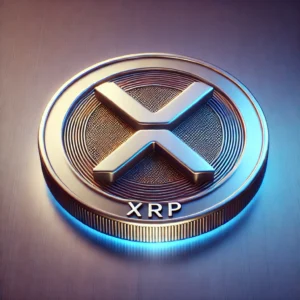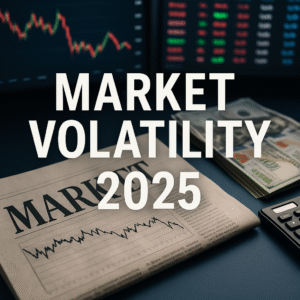Liquidation is one of the most common and painful ways traders lose money in crypto futures. It’s the moment when your trade is forcefully closed by the exchange, and your margin — sometimes your full wallet — is wiped out. This happens automatically, without emotion, and faster than most traders expect.
In 2025, with more people using leverage and futures trading becoming mainstream, liquidations are hitting harder than ever. Platforms like Binance, Bybit, and OKX have made it easier to open trades, but that also means many new traders are entering positions without fully understanding liquidation risk.
What Is Liquidation in Futures Trading?
Liquidation happens when your trade starts losing, and your margin drops below a required level (called maintenance margin). At that point, the system closes your trade to stop further loss — whether you like it or not. You don’t control this; the platform does.
This isn’t like setting a stop-loss manually. It’s automatic. You lose your margin, and your position is closed at the current price.
Why So Many Traders Lose Money This Way in 2025
More traders are using high leverage (10x–100x) without fully knowing the risk. Some open trades using their full wallet. Others skip using stop-losses, ignore their margin ratio, or don’t check their liquidation price.
When the market moves even a little against them, their position gets wiped out. This happens in seconds, especially during volatile events like CPI data drops, ETF news, or whale movements.
Who Is at the Highest Risk?
-
Beginners who don’t know how margin and leverage work
-
Emotional traders who trade hype without planning
-
Over-leveraged traders who use 25x–100x to chase fast profit
-
Cross margin users who unknowingly put their whole wallet at risk
These traders often lose everything in one trade — not because the idea was wrong, but because they didn’t manage risk properly.
What You Will Learn in This Guide
In this guide, you’ll learn:
-
What liquidation means and how it works
-
The difference between liquidation price and stop-loss
-
How to calculate your liquidation level
-
Real examples from 2025 trades
-
Smart tools and strategies to avoid getting liquidated
Whether you’re new to futures or already trading, this guide will help you stay safe, survive market dips, and trade smarter in high-leverage environments.
Understand What Causes Liquidation
Liquidation in crypto futures doesn’t happen randomly — it happens when a trader ignores risk and gives too much power to the market. In 2025, more people are using leverage without fully understanding what can trigger a liquidation. If you know what causes it, you can avoid it before it’s too late.
Let’s break down the most common reasons liquidation happens — and how to avoid each one.
⚠️ Using Too Much Leverage (Like 50x or 100x)
High leverage is one of the fastest ways to get liquidated. While it looks attractive — turning $100 into a $10,000 position — it also brings your liquidation price extremely close to your entry.
At 100x leverage, just a 1% market move can wipe you out. Even with 50x, your trade has almost no breathing room. If BTC or ETH moves even slightly in the wrong direction, the system auto-closes your position instantly.
✅ Fix: Stick to 2x–5x leverage, especially if you’re new or trading without backup margin.
Low Margin and High Market Volatility
Even if you’re using medium leverage, low margin plus market volatility is a dangerous combo. During major news events (like CPI reports or ETF announcements), crypto prices can move 5–10% in minutes.
If your margin is small, your equity can’t handle big price swings. That’s when your margin ratio spikes and liquidation is triggered.
✅ Fix: Use a margin buffer — put in more than the minimum margin required, so you have cushion when the market gets choppy.
❌ Ignoring Stop-Loss and Risk Planning
Many traders don’t set a stop-loss, thinking they’ll close the trade manually “when the time is right.” But the market doesn’t wait.
Without a stop-loss:
-
Your position can hit liquidation before you react
-
Your full margin is at risk
-
You give up control to the system
✅ Fix: Always use a stop-loss above your liquidation price (for longs) or below (for shorts). It helps you exit early and protect your funds.
Trading Emotionally or Without a Plan
This is one of the most dangerous mistakes. When you:
-
Jump into hype coins without checking margin
-
Increase leverage just to recover from a loss
-
Ignore margin ratio and funding fees
→ You’re trading on emotion, not strategy
And emotion rarely wins in futures.
✅ Fix: Create a plan before the trade:
-
Know your entry, exit, stop-loss, and leverage
-
Calculate your liquidation price in advance
-
Don’t make decisions during panic or FOMO
Final Reminder:
Liquidation is caused by math, not emotion. If your margin can’t handle the loss, the system will liquidate you — no matter how confident you feel. So trade smart, plan ahead, and keep your risk under control.
Use Proper Leverage
Leverage can be your best tool — or your worst enemy. It allows you to trade bigger than your actual capital, but it also increases your chances of getting liquidated if you don’t use it wisely. In 2025, many traders are losing money not because of bad trade ideas, but because they use too much leverage too fast.
Let’s break down how to use leverage properly and why low leverage is smarter — especially when you’re starting out.
✅ Start With Low Leverage (2x–5x Only)
If you’re a beginner or trading without a big wallet, 2x to 5x leverage is the sweet spot. It gives you:
-
A bigger position than your capital
-
Enough buffer to survive short-term price moves
-
Lower stress and easier risk control
With 5x, your liquidation price is still far enough to avoid quick losses from normal market dips. It’s also easier to recover if things don’t go your way.
⚠️ Why High Leverage Increases Risk
High leverage (like 25x, 50x, or 100x) brings your liquidation price dangerously close to your entry. This means even a 1–2% price move against you can instantly wipe out your margin.
Also:
-
Fees (like funding and taker fees) hit harder
-
You have less time to react
-
One bad candle = full loss
Even experienced traders avoid using 50x+ on volatile coins — and definitely not without a tight stop-loss.
Real Example: 10x vs 50x Trade Outcome
Let’s say:
-
You long BTC at $30,000
-
You use $100 margin
Trade 1: 10x leverage
-
Position size = $1,000
-
Liquidation around $27,000 (10% drop buffer)
Trade 2: 50x leverage
-
Position size = $5,000
-
Liquidation around $29,400 (just 2% drop buffer)
If BTC drops just $600 (2%), the 50x trade is liquidated.
The 10x trade survives, giving you more time to manage the position.
✅ Lesson: High leverage = tight rope
Low leverage = breathing room
How to Test Leverage Before Going Live
All major platforms like Binance, Bybit, and OKX offer margin calculators. You can test different leverage levels before placing real trades.
Steps:
-
Open the calculator tool
-
Enter entry price, margin, and leverage
-
Check the liquidation price
-
Adjust until you find a comfortable buffer
You can also practice with small amounts or in demo mode (Bybit testnet, Binance strategy tester) before using real money.
Final Tip:
Your goal is not to look smart with 100x trades — your goal is to stay in the game long enough to grow consistently. Low leverage keeps you safe, steady, and smarter.
Always Use Stop-Loss Orders
In futures trading, a stop-loss is not optional — it’s your safety net. Without it, you’re relying on luck and giving the exchange full control over when to end your trade (via liquidation). A well-placed stop-loss can help you exit early, protect your capital, and trade with peace of mind — even when the market turns against you.
Here’s how stop-loss orders work and why they are critical for survival in crypto futures.
What Is a Stop-Loss and How It Helps
A stop-loss is an order you set to automatically close your trade when the price moves to a specific level — before liquidation happens. It limits how much you can lose on a single trade.
Example:
-
You long BTC at $30,000
-
You set a stop-loss at $28,800
-
If BTC drops to $28,800, your position closes automatically
-
You lose a controlled amount (e.g., 4%) instead of your entire margin
This protects your funds, helps manage risk, and takes emotion out of the decision.
Where to Place Your Stop Based on Market Trend
Stop-loss placement depends on your entry, trend, and volatility. Here are some basic rules:
-
In an uptrend (long trade) → set stop-loss below recent support level
-
In a downtrend (short trade) → set stop-loss above recent resistance
-
Avoid placing it too close (you’ll get stopped out early)
-
Don’t place it too far (you’ll lose too much)
✅ Smart Tip: Use technical tools like ATR (Average True Range) or support/resistance zones to choose stop-loss levels with logic.
⛔ Why Stop-Loss Saves You Before Liquidation Hits
Liquidation is the system closing your trade when your margin is too low. At that point, you have no control and your full margin is lost.
A stop-loss lets you exit earlier, when the loss is still small. It gives you the power to decide how much you’re willing to lose — instead of letting the system decide.
Without stop-loss:
A 5% drop = liquidation on 20x leverage
With stop-loss:
You can choose to exit at 2% loss and keep your capital safe for the next trade
⚙️ Tools That Set Stop-Loss Automatically
All major exchanges let you set a stop-loss when opening your trade.
On Binance Futures:
-
Use the “Stop Market” or “Stop Limit” option
-
Set your stop-loss and take-profit in the same window
On Bybit and OKX:
-
Use the “TP/SL” tab before confirming order
-
You can also modify stop-loss anytime during the trade
-
Risk settings let you pre-define max loss per trade
Some third-party bots like 3Commas and Altrady also offer automated stop-loss management with trailing and dynamic features.
Final Advice:
If you don’t set a stop-loss, the market will set a liquidation for you. Always protect your position with a stop-loss — it’s the most powerful tool in your trading toolbox.
Manage Your Margin Smartly
Margin is your lifeline in crypto futures trading. The smarter you manage it, the safer your trades become. Many traders get liquidated not because of bad entries — but because they didn’t watch their margin ratio, used full wallet balance, or didn’t understand how cross vs isolated margin really works.
Let’s explore how to manage your margin smartly to avoid sudden losses.
What Is Margin Ratio and How to Track It
Margin ratio shows how close your position is to being liquidated. It’s usually shown as a percentage on platforms like Binance, Bybit, and OKX.
-
Below 50% = Safe
-
70%–90% = Caution
-
100% = Liquidation triggered
It’s calculated using:
Margin Ratio = (Used Margin / Total Equity in Trade) × 100
You can check it anytime in the “Positions” tab. Many platforms show a color bar — green (safe), yellow (warning), red (danger).
✅ Rule: Always stay under 80%. If your margin ratio crosses 90%, take action immediately.
Keep Extra Funds as a Margin Buffer
Don’t risk your full wallet on one trade. Always keep some funds unused in your futures account to top up if needed.
Let’s say:
-
You enter a $1,000 trade with $100 margin at 10x leverage
-
Market dips, margin ratio hits 95%
-
If you have $50 left in wallet, you can add margin and drop the ratio back to 60–70%
This simple move saves your trade from liquidation.
✅ Tip: Use only 20–30% of your wallet per trade. Leave the rest for buffer and other setups.
Isolated vs Cross Margin: Which One Protects You Better?
-
Isolated Margin: Only the margin you assign is at risk. Your other funds stay safe. If the position is liquidated, you lose only what you used in that trade.
✅ Good for beginners, test trades, or when you want strict risk control.
-
Cross Margin: Uses your entire wallet balance to support the trade. This gives more cushion and a farther liquidation price, but if the trade fails, your whole wallet can be drained.
✅ Good for experienced traders or managing multiple positions.
Smart Rule: Use isolated margin to limit loss. Use cross only if you fully understand the risk and have backup plans.
Example: How to Avoid Sudden Margin Drops
Wrong approach:
-
Trader opens 20x leveraged long with $100
-
Puts full wallet in trade
-
Doesn’t monitor funding fee or margin ratio
→ Margin ratio spikes during volatility → liquidation hits
Smart approach:
-
Trader uses 5x leverage with $150
-
Keeps $100 in reserve
-
Adds $50 when margin ratio hits 85%
-
Price bounces — trade survives and closes in profit
Just keeping a little extra margin can mean the difference between profit and liquidation.
✅ Final Tip:
Margin isn’t just for entering trades — it’s for defending them. Always track your margin ratio, keep buffer funds, and choose the right mode for each trade.
Don’t Use Your Whole Wallet
One of the biggest mistakes new futures traders make is going “all in” on a single trade. It might feel like confidence or conviction — but in reality, it’s one of the fastest ways to get liquidated. Good traders don’t just protect profits — they protect their capital. And that starts with not using your entire wallet in one position.
Here’s why using only a small part of your funds in each trade gives you long-term survival and more control.
Never Trade With All Your Money in One Position
When you use your full wallet on a single leveraged trade, you have zero room to recover if the trade goes against you.
If it fails, your entire balance is gone in seconds — no top-up, no buffer, no backup.
Even a 2–3% market dip can trigger liquidation if you’ve used high leverage with no space to breathe.
✅ Golden Rule: Your goal is to survive multiple trades — not win in one shot.
Use 5–20% of Wallet Per Trade
A smarter approach is to risk only 5%–20% of your total balance in any single trade. This helps you:
-
Add margin if the trade goes near liquidation
-
Enter other trades if opportunity comes
-
Avoid emotional panic when price dips temporarily
Example:
-
Wallet = $1,000
-
Trade 1: Use $100 (10%)
-
Trade 2: Use $150 max (15%)
→ You still have $750+ available for risk control
️ Keep the Rest of the Balance for Backup
Having extra funds in your futures account (but not used) gives you the ability to:
-
Add margin instantly when your position is at 90% ratio
-
Re-enter after a small loss
-
Scale in if the trend confirms
It’s like having a second chance built-in — and you don’t need to reload your account or panic sell your assets.
✅ This backup money gives you flexibility, and that’s power in volatile markets.
How Small Trades Help You Survive Long-Term
Small trades help in three ways:
-
They give you time to learn without heavy losses
-
They keep your emotions under control
-
They allow multiple opportunities — instead of blowing up on one bet
Big wins come from consistency, not size. Small, safe, steady trades often outperform aggressive, high-risk bets in the long run.
Final Tip:
Trading with your full wallet is like fighting without armor.
Use small portions, keep margin backup, and grow your account slowly — that’s how futures trading becomes sustainable.
Watch Liquidation Price Before You Trade
The biggest mistake traders make in crypto futures?
They jump into trades without checking their liquidation price. One small price move, and boom — the position is gone. That’s why knowing your liquidation price before entering a trade is not optional — it’s survival.
Let’s break down how to check it, what to do if it’s too close, and how it applies to real BTC and ETH trades in 2025.
️ How to Check It on Binance, Bybit, or OKX
All major futures platforms show your liquidation price even before you open a trade.
Binance:
-
Click on the calculator icon next to “Isolated/Cross”
-
Choose “Liquidation Price” tab
-
Enter entry price, leverage, and margin
-
Result shows estimated liquidation price instantly
Bybit:
-
Open a trade preview window
-
You’ll see “Est. Liquidation Price” right under margin input
-
It updates live as you change leverage or margin
OKX:
-
Shows liquidation price in the Unified Trading Mode preview
-
Also displays live in the “Positions” tab once trade is open
-
You can also access margin ratio and ADL rank from the same screen
Use a Liquidation Calculator for Safety
Before you press “Confirm Trade,” always test your setup with a liquidation calculator. Most platforms provide it built-in, and some third-party apps (like CoinGlass or 3Commas) also offer independent calculators.
Why it helps:
-
Shows how much room you have before liquidation
-
Helps compare 5x vs 10x vs 20x risk
-
Lets you decide if your stop-loss is realistically above liquidation
✅ Smart Tip: If liquidation price is too close to entry (less than 3%), adjust your trade before it’s too late.
Adjust Margin or Leverage If Liquidation Price Is Too Close
If your liquidation price shows up too close to your entry (say, 1–2% away), it’s a red flag. You’re almost guaranteed to get liquidated during a normal price fluctuation.
What you can do:
-
Add more margin to move liquidation farther
-
Lower your leverage from 20x to 5x
-
Split the trade into two entries with different risk zones
These small adjustments can mean the difference between liquidation and survival.
Real Examples with BTC/ETH Trades in 2025
Example 1 – BTC Trade:
-
Entry: $100,000
-
Margin: $200
-
Leverage: 20x
-
Liquidation: ~$95,000
→ That’s just a 5% buffer. BTC has moved 5% in 10 minutes before.
Better Setup:
-
Use $300 margin
-
Reduce to 10x leverage
-
New liquidation: ~$90,000
→ Much safer. Now you survive normal dips.
Example 2 – ETH Short Trade:
-
Entry: $3,000 (short)
-
Margin: $150
-
Leverage: 25x
-
Liquidation: ~$3,180
→ Just 6% upward move and you’re liquidated
Fix:
-
Lower to 10x
-
Use $200 margin
-
New liquidation: ~$3,350
→ More breathing room for news spikes and fakeouts
Final Tip:
If you don’t know your liquidation price before the trade, you’ve already lost control.
Make checking it your first habit — not your last mistake.
Avoid Trading in High Volatility Times
Crypto markets are known for big price swings — but not every moment is good for trading. High volatility may look exciting, but for futures traders, it often means liquidation risk increases massively. The tighter your margin or higher your leverage, the more likely you’ll get wiped out when prices spike fast.
Here’s how to recognize volatile moments and avoid making risky trades at the wrong time.
️ What Counts as a Volatile Market?
A volatile market is when price moves fast, unpredictably, and without clear direction. This can mean:
-
Sudden 5–10% moves in minutes
-
Long wicks and big candles
-
Massive volume spikes
-
Noisy price action without proper support or resistance
During such times, it’s hard to place stop-losses safely, and trades may get liquidated before you can react.
News Events, CPI Reports, and Sudden Pump/Dumps
Certain events create planned or unplanned volatility, like:
-
US CPI reports / Interest rate announcements
-
Crypto ETF approvals/rejections
-
Big project news or security breaches
-
Pump-and-dump behavior on meme coins
-
Exchange listing/delisting announcements
Even experienced traders avoid leverage-heavy positions during these windows because one unexpected candle can destroy their margin — no matter how good the setup looked 5 minutes ago.
✅ Tip: Watch the economic calendar and avoid opening trades 30–60 minutes before major events.
❌ Why Tight Margin Trades Fail During Big Moves
When you open a high-leverage trade with limited margin, your liquidation price is very close to your entry. In volatile conditions:
-
Price can hit both your take-profit and stop-loss in seconds
-
Spikes can trigger liquidation before reversing
-
Network lags or slippage may delay your manual exit
Even if your trade idea is right, your position won’t survive if it’s overexposed during a volatile move.
Best Times to Trade Safely
Some market periods are more stable and better for planning:
-
During low news hours
-
After major announcements have settled
-
When charts form clean support/resistance patterns
-
During Asia and Europe overlapping session (moderate volatility with volume)
✅ Bonus Tip: Use 15m–1hr charts with lower leverage (2x–5x) during these times. Your trades will be easier to manage and less likely to get shaken out.
Final Advice:
Trading in high volatility is like driving fast during a storm — even the best setup can fail. Trade when the market is calm, your mind is clear, and your margin has space to breathe.
Learn Before You Trade Big
Futures trading offers big rewards — but also big risks. If you jump in with large trades without proper learning, you’re not investing… you’re gambling. The best futures traders in 2025 are not the ones chasing hype, but the ones who took time to learn before going big.
Here’s how you can build confidence, protect your capital, and grow safely before scaling up your position sizes.
Practice with Testnet or Demo Trading
Before using real money, you should practice in a risk-free environment. Platforms like:
-
Bybit Testnet
-
Binance Strategy Tester (via TradingView)
-
OKX demo accounts
let you test real trading conditions with fake funds. You can learn:
-
How leverage affects liquidation
-
Where to set stop-losses
-
How margin ratio moves during volatility
✅ Bonus: Treat demo like real money. If you lose all your testnet balance fast, you’re not ready to go live yet.
Follow Experts Who Teach Risk — Not Just Gains
Not every influencer is worth following. Avoid those who only show profits and ignore losses. Instead, follow:
-
Traders who explain stop-losses
-
Channels that discuss risk-to-reward ratios
-
Educators who show how to survive first, then profit
Watch how they handle bad trades — not just good ones.
Use TradingView and Indicators for Better Entries
Don’t rely only on price hype — use technical tools to find real opportunities. On TradingView, learn to:
-
Spot support and resistance levels
-
Use RSI, MACD, and volume to confirm momentum
-
Identify fake breakouts before they trap you
Even basic knowledge of indicators can drastically improve your entry timing and avoid buying at the top or shorting the bottom.
❌ Avoid Hype Trades From Twitter/YouTube Signals
In 2025, crypto Twitter and YouTube are flooded with “calls,” “signals,” and “next 100x coins.”
But most of them don’t consider your:
-
Wallet size
-
Leverage
-
Risk tolerance
-
Margin management
Following random hype signals without a stop-loss is one of the top reasons beginners get liquidated.
✅ Tip: Always test any trade idea on demo, calculate liquidation, and ask:
“Can I afford to lose this position and still continue tomorrow?”
Final Wisdom:
Learning costs time. Not learning costs money.
Train first. Trade second. Scale last.
Conclusion: Survive First, Then Profit
Liquidation isn’t bad luck — it’s bad planning. In crypto futures, the key to long-term growth isn’t about predicting every move perfectly. It’s about staying in the game long enough to win. And that’s only possible when you build your trades on strategy, not emotion.
Liquidation Can Be Avoided with Smart Planning
Every liquidation is preventable if you:
-
Know your liquidation price before trading
-
Use proper leverage
-
Set stop-losses
-
Keep margin buffer funds ready
-
Avoid high-risk trades during volatile hours
These aren’t advanced skills — they’re basic survival habits.
Don’t Chase Fast Profits with Blind Risk
Yes, high leverage can flip $50 into $500. But it can also erase your wallet in seconds. Fast gains come with faster losses when you don’t calculate risk.
Most traders get liquidated chasing signals, not following strategy. The ones who last are the ones who stay patient, plan well, and don’t gamble with their margin.
✅ Use Small Size, Clear Stop-Loss, and Margin Buffer
Your trade size should match your experience.
Your stop-loss should match your risk tolerance.
Your margin buffer should match your strategy.
If those three things are in place, liquidation will become rare, not regular.
In 2025, Survival = Success in Futures Trading
This year’s most successful traders are not the loudest on Twitter — they’re the quiet ones who didn’t blow up in January, March, or May.
They’re still here. Still compounding. Still trading.
Why? Because they made survival the goal — and profit the outcome.
FAQs
1. What’s the safest leverage in futures?
The safest leverage for most traders — especially beginners — is 2x to 5x. It gives your trade more breathing room, keeps your liquidation price far away from your entry, and helps you survive small market dips. Anything above 10x should be used with extreme caution and proper stop-loss planning.
2. How much margin should I keep?
Ideally, use only 10% to 25% of your wallet per trade. The rest should be left as margin buffer, so you can add more if your margin ratio rises or if the trade needs time to play out. This prevents instant liquidation during volatility.
3. Can I recover after being liquidated?
Yes, you can recover — but only if you learn from the mistake. Most successful futures traders today have been liquidated early in their journey. The key is to adjust your strategy, start small again, and focus on risk management over fast profit.
4. Is cross margin safer than isolated?
Isolated margin is safer for beginners because it limits the loss to just that one position. Cross margin gives more flexibility and a wider liquidation buffer, but it uses your full wallet. If you don’t manage it carefully, a single trade can wipe out your entire balance.
5. Which exchange offers best liquidation protection tools?
Binance, Bybit, and OKX all offer strong protection tools like:
-
Real-time liquidation calculators
-
Auto margin alerts
-
ADL (Auto-Deleverage) ranking
-
Cross/Isolated switch
Among these, Bybit is most beginner-friendly, while Binance gives deeper customization for advanced users.









